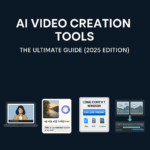The Future of Storytelling Is Smarter Than Ever
Video is the most powerful form of communication today. From YouTubers editing their first vlog to marketing agencies producing high-budget brand videos, the demand for faster, easier, and more creative editing has never been higher.
Enter AI video editing — a revolution that’s reshaping how we tell stories.
In this comprehensive AI video editing guide, you’ll learn exactly how artificial intelligence can simplify your workflow, which tools are worth using in 2025, and how even total beginners can create studio-quality videos without expensive gear or years of training.
What Is AI Video Editing?
AI video editing means using artificial intelligence and machine learning algorithms to assist or automate parts of the video creation process — things like cutting unnecessary footage, syncing clips to music beats, generating subtitles, or even creating entire videos from text.
Traditionally, video editing required hours of manual trimming, transitions, and rendering. Today, AI can perform many of those steps in seconds.
Here’s how AI helps:
- Scene detection – Automatically finds transitions, highlights, or mistakes.
- Auto-captions & voiceovers – Instantly generate subtitles and AI-narrated voice tracks.
- Color correction & sound balance – Fix visual and audio issues automatically.
- Script-to-video generation – Create full videos from written text or blog posts.
AI doesn’t just speed things up — it opens new creative possibilities for people who’ve never touched an editing timeline before.
Why AI Video Editing Matters in 2025
2025 marks a turning point. Tools like Runway Gen-3, Pictory, and Descript have made AI video editing so intuitive that it’s becoming the new normal.
Whether you’re a:
- YouTuber creating consistent content,
- Business owner producing marketing videos, or
- Freelancer building a side income from video editing,
AI allows you to produce content that looks professional, sounds polished, and captures attention — all in a fraction of the time.
Benefits of AI Video Editing
1. Time Efficiency
AI can cut editing time by up to 80%. Tasks like trimming silences, adding subtitles, and matching clips to audio are now automatic.
2. Accessibility for Beginners
You don’t need a filmmaking degree anymore. AI tools provide templates, drag-and-drop interfaces, and smart automation that make editing possible for anyone.
3. Lower Costs
Instead of hiring full production teams, creators can now use AI tools for video editing at affordable monthly rates — some even free.
4. Consistent Quality
AI ensures your videos maintain uniform lighting, tone, transitions, and color across projects — key for brand identity.
5. Smarter Storytelling
AI doesn’t just edit — it learns. Many tools analyze your previous work and recommend pacing, music, or voice styles that fit your unique tone.
Best AI Video Editing Tools of 2025
AI video editors come in all forms — some are all-in-one suites, others specialize in automation or creativity. Below are the five best AI video editors of 2025 worth exploring.
🧩 1. Pictory – Turn Text into Engaging Videos
If you’ve ever wished you could turn a blog post or script into a video instantly, Pictory is the answer.It analyzes text and automatically finds visuals, captions, and stock footage to match your story. It’s perfect for creators, marketers, and YouTubers who want content repurposing made simple.
Key Features:
- Script-to-video generation
- Auto-captioning and transcription
- Royalty-free music and stock media
- Voiceover integration
Best For: Marketers, bloggers, and business coaches.
CTA: 👉 Try Pictory free today and turn your words into videos in minutes.
🎬 2. Runway Gen-3 – Cinematic AI Video Generation
Runway’s Gen-3 model has changed the game. With just a text prompt like “a futuristic city skyline at sunset,” Runway generates a fully animated, realistic video scene. It’s not just an editing tool — it’s AI filmmaking.
Key Features:
- Text-to-video generation
- Realistic motion and lighting
- AI inpainting & background editing
- Style transfer (make videos look cinematic)
Best For: Creative agencies, filmmakers, advertisers.
CTA: 🎥 Bring your imagination to life with Runway Gen-3.
🗣️ 3. Descript – Edit Videos by Editing Text
Descript makes video editing feel like writing a Word document. It transcribes your video, and you can delete filler words or cut sections by simply deleting text. Perfect for podcasters, educators, and YouTubers who want precise, text-based editing.
Key Features:
- Text-based video editing
- AI voice cloning (Overdub)
- Studio Sound for noise cleanup
- Auto-captions and screen recording
Best For: Educators, podcasters, explainer-video creators.
CTA: 🧠 Get started with Descript — edit your next video like a document.
👩💼 4. Synthesia – Create Videos with AI Avatars
Want to produce professional-looking talking-head videos without cameras or actors? Synthesia generates videos using realistic AI avatars who speak your script in multiple languages. It’s ideal for training, marketing, and explainer videos.
Key Features:
- 150+ AI avatars
- 120+ languages & accents
- Script-to-speech generation
- Custom templates for business
Best For: Enterprises, educators, startups.
CTA: 🎙️ Create stunning AI avatar videos with Synthesia — no camera required.
🎨 5. Wondershare Filmora AI – Simple Yet Smart
Filmora’s AI-powered version adds automation to its already easy interface. It offers smart cuts, scene detection, auto beat sync, and one-click effects — a balance between control and convenience.
Key Features:
- Auto beat sync
- AI background remover
- Scene detection
- Template presets
Best For: Beginners who want a powerful yet easy-to-learn editor.
CTA: 💡 Try Wondershare Filmora today — simplicity meets smart editing.
Step-by-Step: How to Use AI for Video Editing
Even if you’re new to editing, using AI tools follows a simple structure.
Step 1: Choose the Right AI Tool
Pick a platform that fits your purpose — for example:
- Pictory for blog-to-video.
- Descript for podcasts.
- Runway for cinematic visuals.
Step 2: Upload or Create Content
Upload raw footage, audio, or text. AI tools analyze your content automatically to identify scenes, speakers, and moments of interest.
Step 3: Let AI Do Its Magic
The software automatically edits, adds captions, and even suggests music or transitions. Some tools like Filmora AI sync your video cuts to background beats.
Step 4: Customize Manually
Fine-tune transitions, replace stock footage, and adjust fonts or captions to align with your brand.
Step 5: Export & Optimize for Platforms
AI tools automatically optimize export settings for platforms like YouTube, TikTok, Instagram, and LinkedIn — saving you hours in manual resizing.
📊 Example Comparison Table
| Tool | Best For | Key Feature | Price Range |
|---|---|---|---|
| Pictory | Text-to-video content | Blog-to-video automation | From $19/mo |
| Runway Gen-3 | Cinematic short films | Text-to-video AI | From $12/mo |
| Descript | Podcasts, tutorials | Text-based editing | From $12/mo |
| Synthesia | Explainers, training | AI avatars | From $30/mo |
| Filmora AI | Beginners | Auto beat sync | From $9.99/mo |
AI Video Editing Tips for Beginners
- Don’t Skip Human Review: Always check AI output for tone, pacing, and context.
- Train Your AI Tools: Most platforms learn from your edits — refine them gradually.
- Balance Automation and Creativity: Let AI handle routine tasks but keep storytelling in your control.
- Leverage Templates: Tools like Canva and Filmora provide templates that maintain brand consistency.
- Stay Trend-Aware: Pair your edits with trending sounds or visual styles from TikTok or Instagram Reels.
Common Mistakes to Avoid
Even with AI, many creators fall into these traps:
- Overusing automation: Too many AI effects can make your video look artificial.
- Ignoring pacing: AI edits are fast but may miss emotional beats.
- Not checking copyright: Always verify the licensing of AI-generated media.
- Skipping the story: AI can’t replace the heart of storytelling — your vision still leads the edit.
The Future of AI in Video Editing (2025–2030)
AI’s evolution is just beginning. Expect to see:
- Fully automated script-to-film creation.
- AI voice replication for multilingual dubbing.
- Emotion-aware editing that adjusts pacing based on tone.
- Real-time virtual production where AI builds scenes instantly as you record.
By 2030, the line between human editing and machine-assisted creativity will blur completely.
FAQs About AI Video Editing
1. What is AI video editing?
It’s the use of artificial intelligence to automate or assist in editing videos — cutting, captioning, adding effects, or generating entire videos from text.
2. Is AI video editing beginner-friendly?
Absolutely! Most tools like Pictory and Filmora AI are built for non-technical users with drag-and-drop features.
3. What is the best free AI video editing software?
Tools like Descript (free tier) and CapCut AI offer free plans with basic AI features.
4. Can AI replace human editors?
No — AI speeds up editing and simplifies the process, but storytelling, emotion, and creativity still require a human touch.
5. Which AI video editing tool is best for YouTubers?
Descript and Pictory are great for YouTubers — they make editing, captioning, and repurposing effortless.
Conclusion
AI isn’t here to replace video creators — it’s here to empower them. From saving hours of editing time to opening doors for complete beginners, artificial intelligence has redefined what’s possible in visual storytelling.
Whether you’re turning your first vlog into a professional clip or producing daily brand content, the tools in this AI video editing guide will help you work smarter, faster, and more creatively.
So go ahead — test the tools, experiment with new workflows, and let AI handle the heavy lifting while you focus on what really matters: the story you want to tell.
✨ Explore more cutting-edge tools and innovations at Ai Of The Decade.










